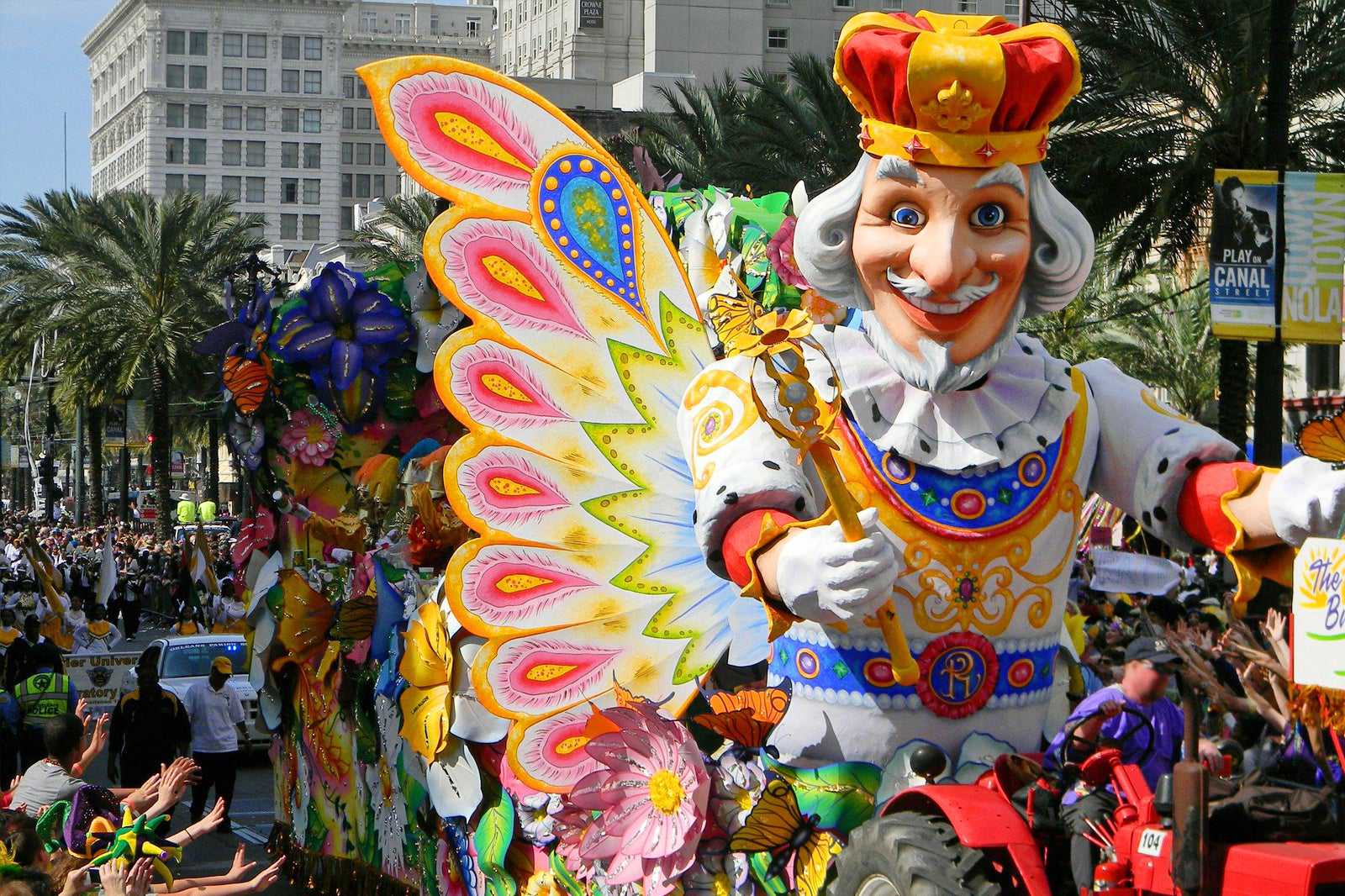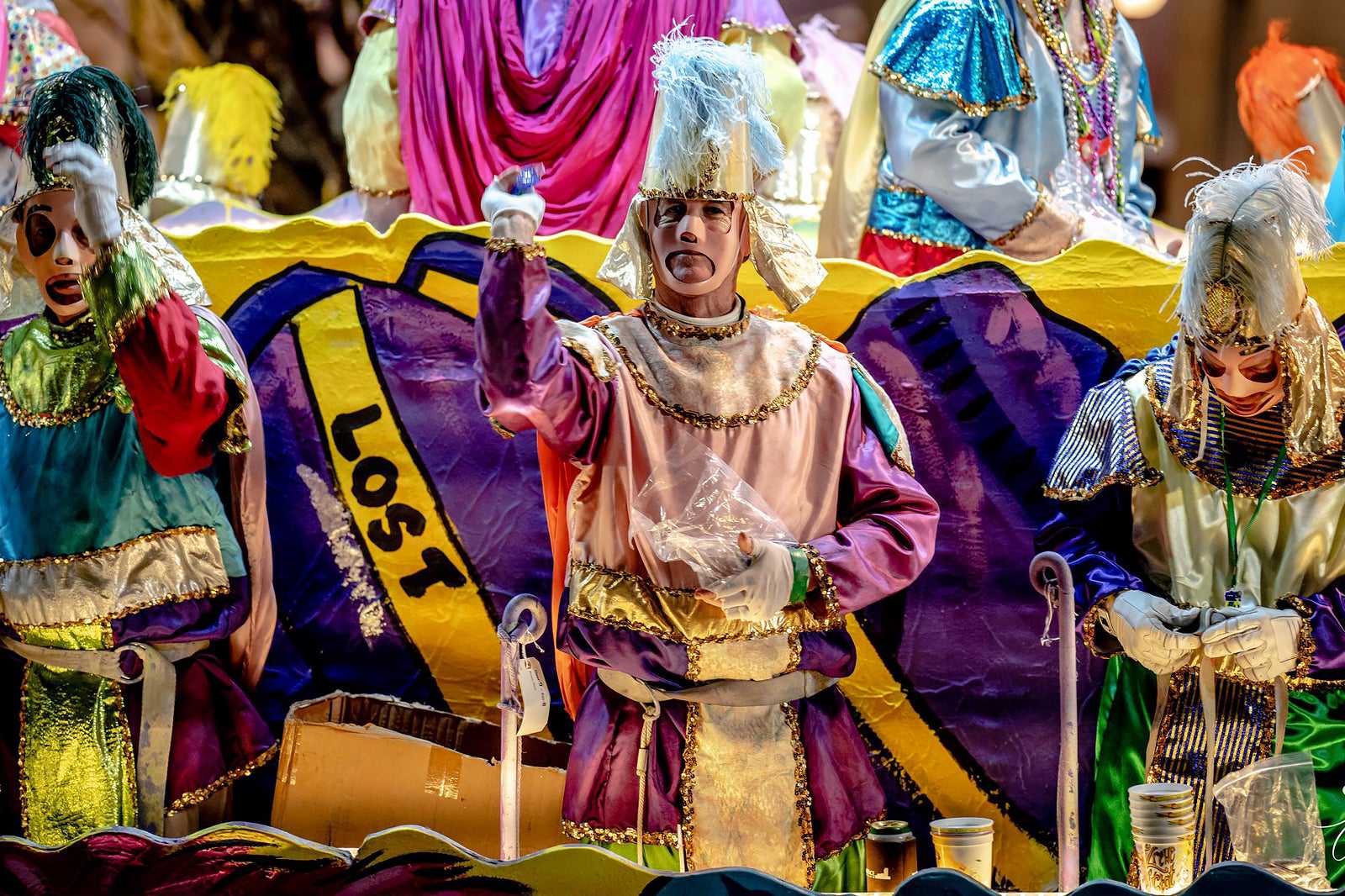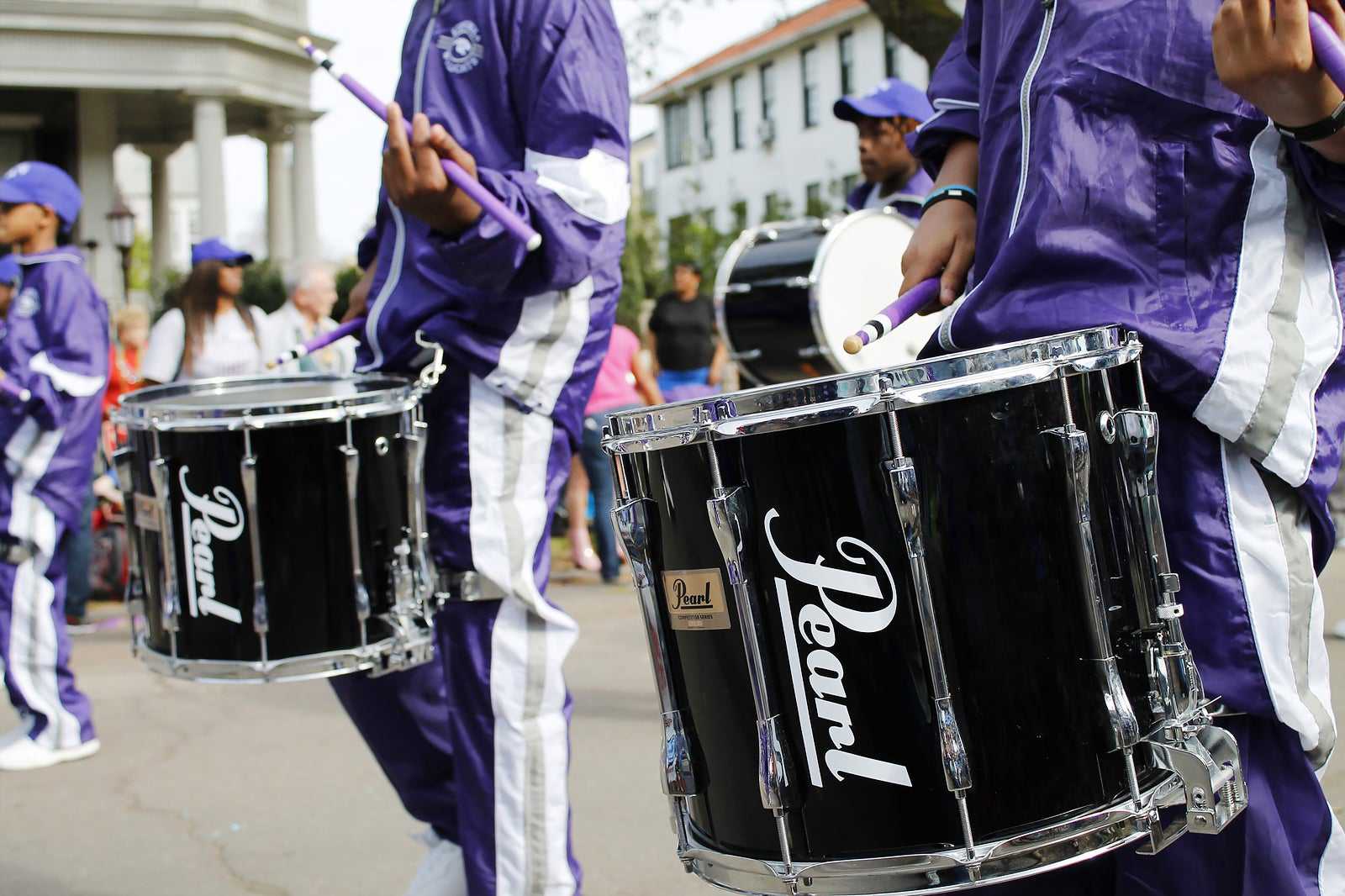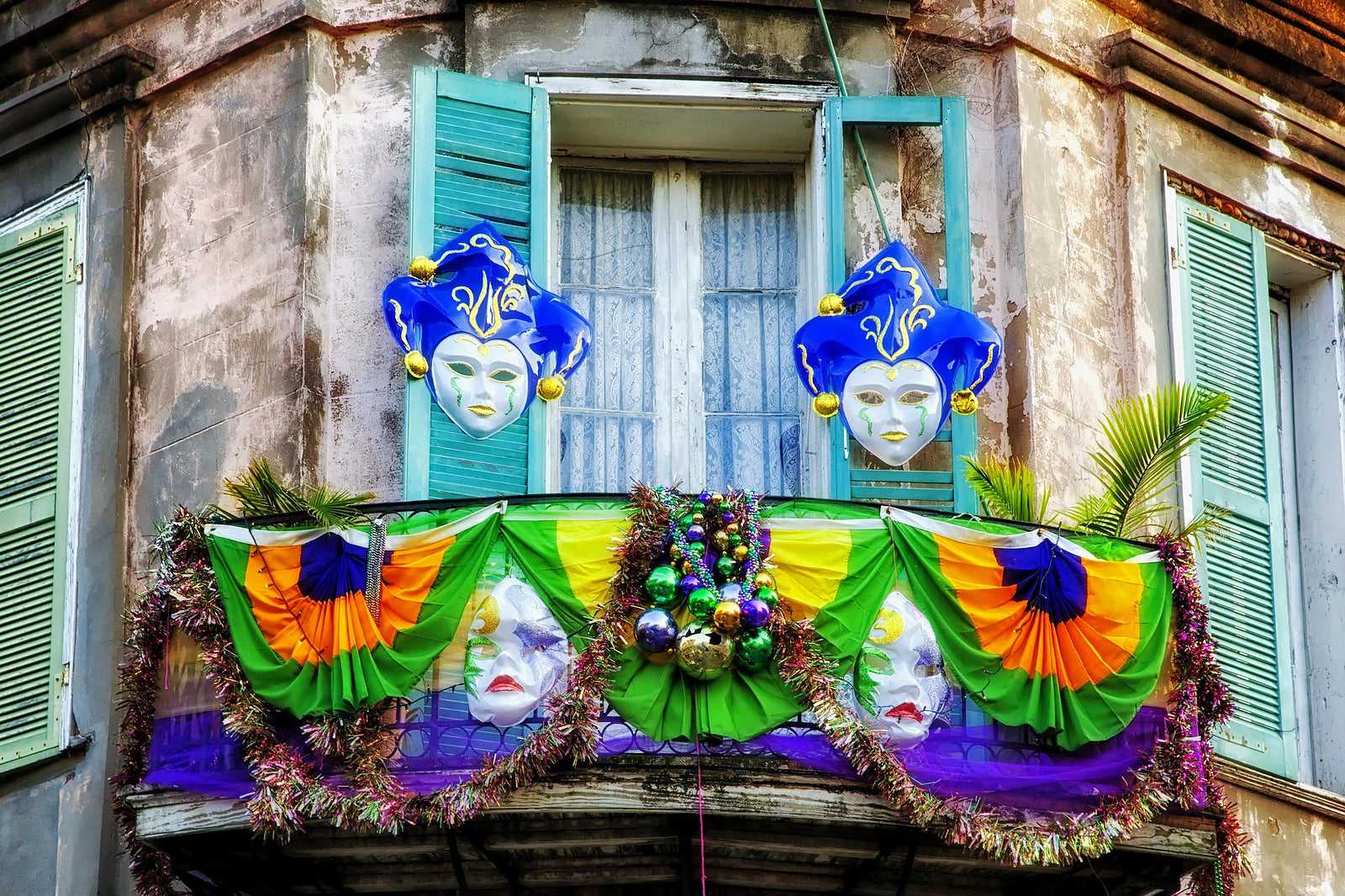Mardi Gras is the largest annual festival in not just New Orleans, but Louisiana. The festival of all festivals takes place 2 weeks before and through Fat Tuesday, with elaborate parades, live music, and colourful characters livening the city streets.
The event starts on Twelfth Night (6 January), which New Orleans observes with the Joan of Arc parade and the Twelfth Night Masquerade Ball. You’ll also witness the Phunny Phorty Phellows Krewe riding a streetcar along the historic St. Charles Streetcar line.
The festival is at its largest during the last 5 days, when revellers enjoy a final bash before Lent. Many fun activities take place in the city’s vibrant neighbourhoods, especially the French Quarter. Masquerade balls are organised by krewes, or social clubs responsible for Mardi Gras celebrations. Joining the party is all part of the fun, so many people plan their New Orleans holiday around this annual festivity.
Mardi Gras in New Orleans - one of the highlights of 6 Things to Do in New Orleans in Spring and 10 Best Festivals in Panama City Beach (Read all about New Orleans here)

A brief history of Mardi Gras
Mardi Gras dates back to 1699, when explorer Pierre Le Moyne D’Iberville founded Louisiana. Back then, the city’s wealthy community threw elaborate balls between Twelfth Night and Fat Tuesday Eve. Mardi Gras has been a legal state holiday in Louisiana since 1875.
Mistick Krewe of Comus is one of the oldest krewes in the city – in 1857, it rolled out Mardi Gras’ first formal parade. Rex is another prominent krewe in Louisiana, founded in 1872. Its parade in 1892 is the reason why purple, green and gold are the festival’s official colours to this day.

ภาพโดย Sergey Galyonkin (CC BY-SA 2.0) เวอร์ชั่นแก้ไข
What are the highlights of Mardi Gras?
Highlights of Mardi Gras in New Orleans include extravagant parades, parties, and masquerade balls, which take place across the city. A total of 70 parades take to the streets during the 2-week-long festival, each following a specific theme for the year. This can be a significant event from history, fairy tale characters, local legends, and literature.
“Throws” are also an important part of Mardi Gras parades. Float riders usually throw various items to spectators. Colourful beads are the most common, but you can also catch doubloons, shoes, plastic cups, and purses. Some of these can hurt if they hit you, so it's best to keep an eye open for throws when you're watching the parades.
This is a great time to dress up in lavish costumes, face paints, and masks. Motorcycle squadrons and dance troupes, as well as jazz and ragtime bands, all add to the festival's atmosphere, so expect loads of party and revelry until late at night.
The Twelfth Night Ball is the first to be held in New Orleans, organised by the Twelfth Night Revelers annually. This is followed by over 100 Carnival balls throughout the celebration, most of which are invitation-only.
Mardi Gras is one of the best times to indulge in Cajun and Creole dishes. Jambalaya and gumbo are must-tries, but king cake is arguably the ultimate dish of Mardi Gras. This oval-shaped treat is topped with purple, green and gold icing. It contains a small plastic baby figurine, which symbolises luck and prosperity to the person who finds it in their slice. That person must buy next year’s king cake.

Good to know about Mardi Gras in New Orleans
Mardi Gras in New Orleans takes place 47 days before Easter, with the official celebration always starting on a Tuesday. For 2 weeks, locals get to indulge in parades, food, music, and dance before the start of Lent. Dates vary annually, so it’s a good idea to check the calendar if you’re planning to enjoy Mardi Gras during your visit to New Orleans.




















